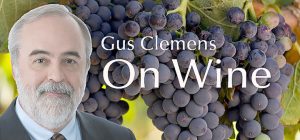Selection of grape variety, topography of the vineyard, and inclinations of vineyard owner and viticulturist influence the next big decision—vine training system.
The natural habitat for a grape vine is growing up and around a tree because a vine can’t support itself unless it grows very close to the ground. There are innumerable training systems in vineyards. Most people are familiar with the straight line of vines with two arms—called canes or cordons, depending on the method—stretched out along a wire, roughly forming the letter T.
Cane pruning (guyot) is used in cool climates. Spur pruning (cordon) is used in warmer climates, including California, Washington, and Texas.
That is by no means a complete description, nor the only form of training. There are many ways to train a wine vine. The pergola system has vines grow overhead and often is used in wet regions. Goblet or head training doesn’t use any trellis and is popular in Spain. Basket training uses no trellising; the vines are trained to resemble a basket low on the ground.
Other choices: High vines—common in cooler climates with high moisture. Low vines—reduces sun exposure and is common in hotter growing regions. If you visit a vineyard in the U.S., you most likely saw a low-vine, cane or spur-trained vine.
Spacing affects vine vigor. Closely spaced vines limit production to improve quality. Widely spaced vines—often found in Spain—are found in dry farming vineyards. Spacing between rows can depend upon harvesting methods. Mechanical harvesting or hand harvesting is one variable. So is location on a hillside or in a valley. Books have been written about vine training and spacing. This gives you the broadest picture.
Trellises—or no trellises—upon which the vines will be trained need to be determined and constructed before planting. Next week we put vines in the ground.
Tasting notes:
• District 7 Chardonnay, Monterey 2018: Good everyday chard that can work at more sophisticated meals. Excellent QPR. $18 Link to my review
• Ron Rubin Chardonnay Russian River Valley 2018: Bright core of fruit. Fresh, creamy, buttery. Mainline California chardonnay. $18-20 Link to my review
• Adriano Adami Valdobbiadene Prosecco Superiore Col Credas Rive di Farra di Soligo Extra Brut DOCG 2019: Apex prosecco. The complexity and progression of glera flavors is astonishing. $21-23 Link to my review
Last round: Do you know why is everyone tired on April Fools Day? Because they just finished a 31-day March. Enjoy drinking wine to help you forget this joke.

